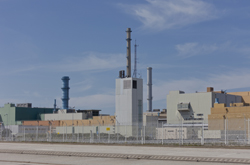New surveillance methods for ageing nuclear reactors
Light water reactors (LWRs) are behind the majority of the world's nuclear power generation. Their steel reactor pressure vessels (RPVs) contain coolant water at high temperatures and pressures. They are subject to strict regulations regarding probability of failure under normal operating conditions and in the case of potential accidents. European nuclear power plants are ageing yet the surveillance database for long-term operation (LTO, more than 40 years) is limited. As such, it is necessary to enhance the knowledge of LTO behaviours regarding neutron irradiation embrittlement of the steel vessels in order to validate or correct existing prediction tools, codes and standards. Better characterisation of microstructural behaviours of irradiated RPV materials will facilitate safe extension of the end-of-life (EOL) of existing reactors as well as improved safety of new reactors under construction. EU-funded scientists are addressing this aim in the context of the project 'Treatment of long term irradiation embrittlement effects in RPV safety assessment' (LONGLIFE). Investigators are interested in enabling the microstructural characterisation of defects and damage induced by neutrons. As such, they are evaluating current existing irradiation embrittlement data and identifying gaps in microstructural and mechanical parameters for LTO. Highly irradiated RPV materials are being used to identify the conditions for late-blooming effects (LBEs), in which the onset of embrittlement occurs only after the neutron influence exceeds a certain threshold. An important question in establishing appropriate regulations and codes is whether or not RPV materials subjected to accelerated irradiation tests demonstrate the same behaviours as those in service. Scientists have already produced several reports based on the outcomes of the testing and analysis protocols. These include guidelines on the reuse of tested specimens, the transferability of test reactor results to real LWR conditions, and for monitoring radiation embrittlement during life extension periods of older reactors. LONGLIFE final results are expected to enhance the safety of both existing LWRs and of new reactors under construction. The implementation of guidelines will demonstrate the dedication of the EU to superior safety monitoring and encourage public support for carbon-free nuclear energy of the highest safety standards.







